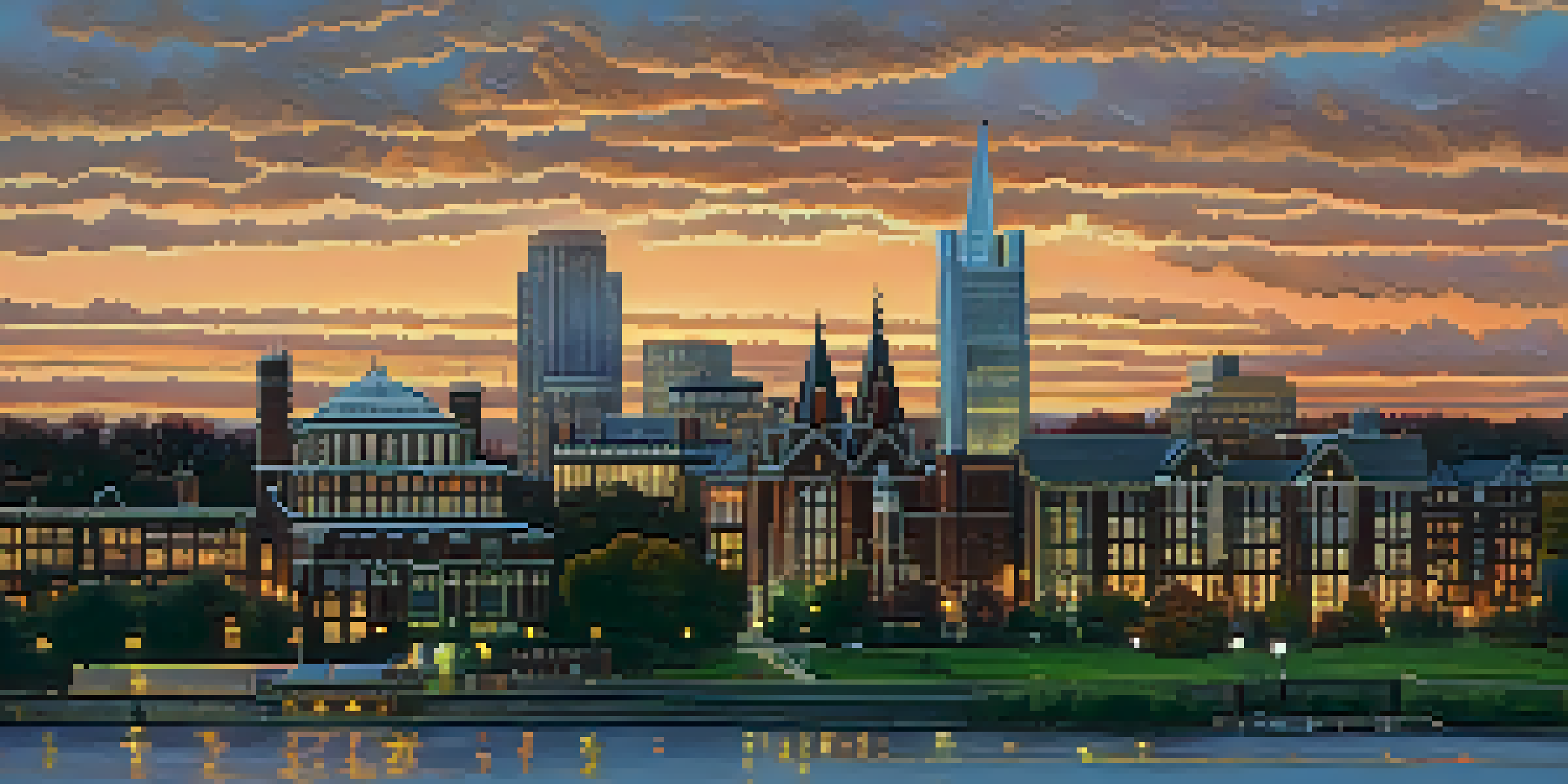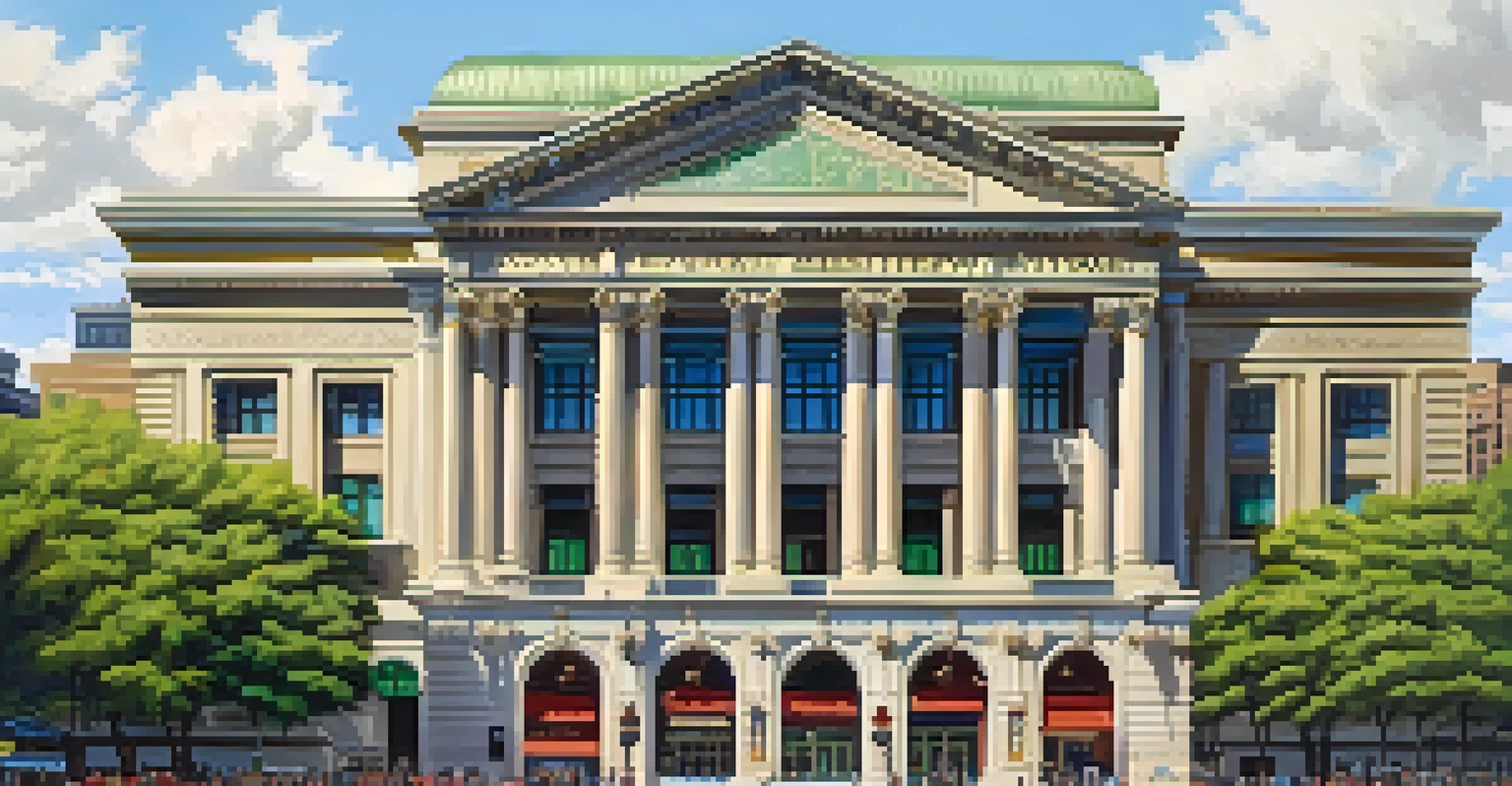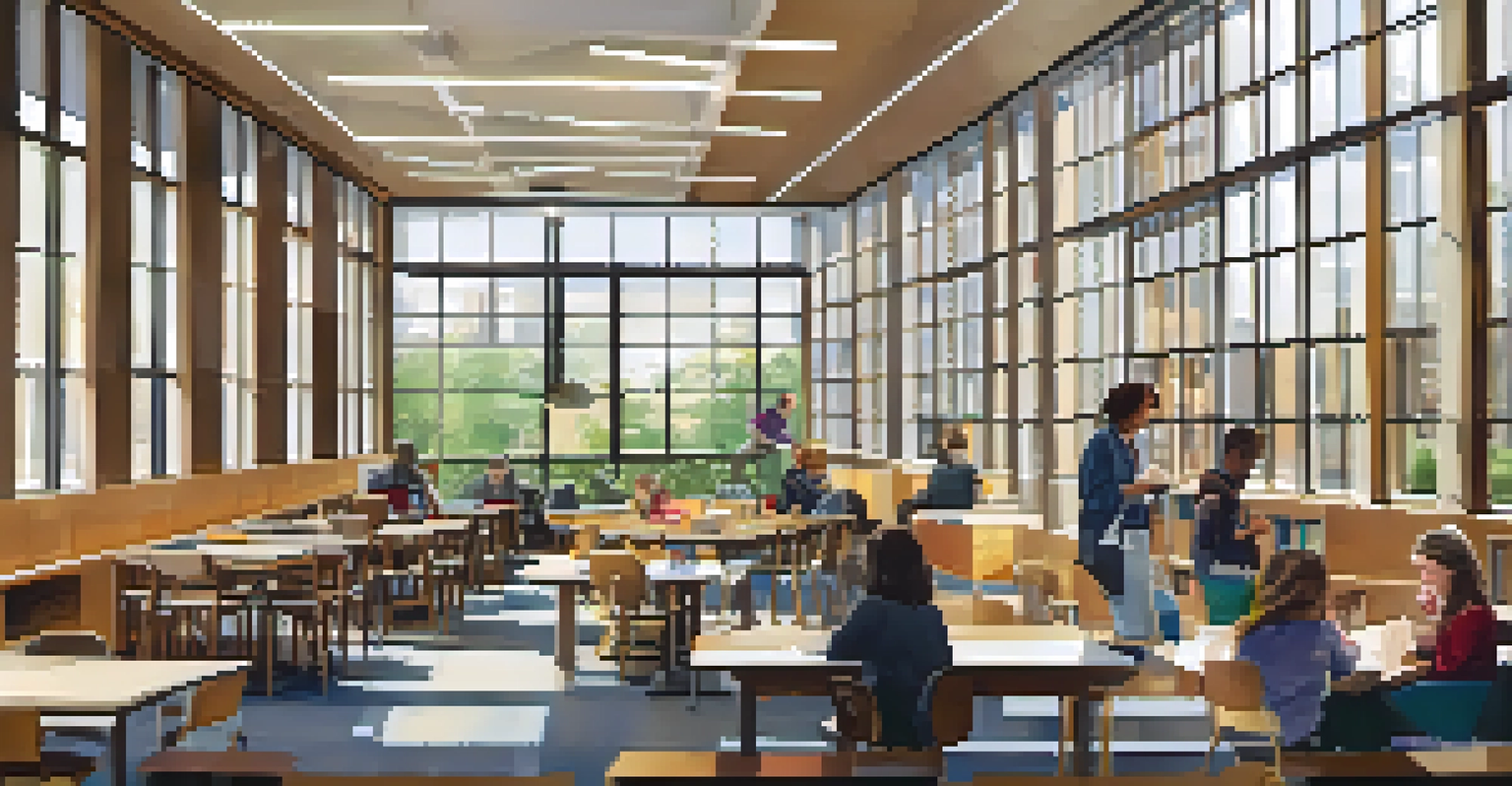Rochester's Landmark Buildings: Stories Behind Their Design

The Origins of Rochester's Architectural Identity
Rochester's architectural landscape is a canvas painted with history, innovation, and culture. The city's origins as a bustling flour milling hub in the mid-19th century laid the groundwork for its impressive buildings. Many of these structures reflect the prosperity of that era, showcasing unique designs that tell stories of growth and ambition.
Architecture is the learned game, correct and magnificent, of forms assembled in the light.
As you stroll through downtown, you'll notice a blend of styles—from Gothic Revival to modernist influences. This eclectic mix speaks to the city's evolution and the various architects who contributed their vision over the decades. Each building stands as a testament to Rochester's adaptability and spirit, making the city a fascinating case study in architectural diversity.
Moreover, the stories behind these structures often intertwine with the lives of prominent figures in Rochester's history. Whether it’s a groundbreaking architect or a local business magnate, their influence can be seen in the details and design choices that have shaped the city’s skyline.
The Historic High Falls and Its Architectural Significance
High Falls is not just a natural wonder; it's also a pivotal part of Rochester's historic identity. This landmark area played a crucial role in the city's industrial past, providing water power that fueled many businesses. The buildings that surround High Falls, like the old Aqueduct and the Genesee Brewery, showcase the ingenuity of early industrial design.

As you explore the area, you’ll find remnants of the 19th-century architecture that reflect the prosperity of the time. These structures, with their sturdy stone facades and arched windows, tell tales of resilience and innovation. They remind us of a time when Rochester was at the forefront of industrial advancement in the United States.
Rochester's Architectural Diversity
The blend of architectural styles in Rochester reflects its rich history and the vision of various architects over the decades.
Today, High Falls serves as a reminder of the city's historical roots while also embracing modern development. The blend of old and new creates a unique atmosphere, where visitors can appreciate both the industrial heritage and contemporary urban life.
The Iconic Eastman Theatre: A Cultural Gem
The Eastman Theatre is a cornerstone of Rochester's cultural scene, and its design is as captivating as the performances held within. Opened in 1922, the theatre was a gift from George Eastman, the founder of Kodak, and designed by renowned architect Thomas Lamb. Its grand architecture, featuring a stunning façade and ornate interiors, captures the elegance of the early 20th century.
The past is not dead; it is not even past.
Inside, the theatre boasts a remarkable organ and an acoustically perfect auditorium, making it a favorite venue for concerts and events. The Eastman School of Music, situated nearby, further enhances its cultural significance, attracting talent from around the globe. The theatre not only showcases artistic performances but also stands as a symbol of Eastman's philanthropic spirit and vision for the community.
Visitors often remark on the magical atmosphere that envelops the Eastman Theatre, where history and artistry converge. The building itself tells a story of dedication to the arts, making it a must-see for anyone exploring Rochester.
Rochester's City Hall: A Beacon of Civic Pride
Rochester City Hall is a striking example of Richardsonian Romanesque architecture, completed in 1891. Its impressive granite exterior, adorned with intricate carvings, serves as a visual representation of civic pride and governance. The building's design was intended to reflect the city's importance and aspirations as a growing urban center.
Inside, the grandeur continues with a magnificent rotunda that welcomes visitors into the heart of local government. The craftsmanship in the woodwork and stained glass is a testament to the artisans of the era, who poured their skills into creating a space that inspires awe. City Hall not only functions as the seat of government but also as a historical landmark that embodies Rochester's democratic values.
Historic Landmarks and Modern Life
Key sites like High Falls and City Hall showcase Rochester's industrial past while embracing contemporary development.
Each time you pass City Hall, you can appreciate how its design fosters a sense of community and connection among Rochester's residents. It stands as a reminder of the city's commitment to service and its rich history.
The Legacy of the Strong National Museum of Play
The Strong National Museum of Play is a celebration of Rochester's legacy in play and childhood development. Its design is playful yet sophisticated, reflecting its mission to engage visitors of all ages. Opened in 1968, the museum has evolved into a vibrant space that houses an extensive collection of toys and games, showcasing the importance of play in our lives.
The museum's design incorporates interactive exhibits that invite visitors to explore and learn through play. From vintage arcade games to a life-sized replica of a LEGO® brick building, each exhibit encourages creativity and imagination. This engaging environment makes the museum a favorite destination for families and educators alike.
Moreover, the Strong Museum is a testament to Rochester's commitment to childhood education and cultural enrichment. It serves as a reminder that play is not just fun—it's a vital part of learning and development, and the museum's design reflects that philosophy beautifully.
The George Eastman Museum: A Blend of Art and History
The George Eastman Museum is a remarkable fusion of art, history, and innovation, housed in the former mansion of Kodak's founder. This stunning building, completed in 1905, is an architectural delight, showcasing Georgian Revival style with its elegant gardens and grand interiors. The museum tells the story of photography and film, highlighting Eastman's contributions to the industry.
Inside, visitors can explore a vast collection of photographs, films, and cameras that chronicle the evolution of visual storytelling. The museum also hosts exhibitions that feature contemporary artists, creating a dialogue between past and present. Its design allows for seamless integration of art and history, making each visit a unique experience.
Cultural Institutions Enrich Community
Museums and theaters, such as the Eastman Theatre and Strong Museum, highlight Rochester's commitment to arts, education, and play.
As you wander through the museum's halls, you can't help but feel a connection to the broader narrative of innovation in Rochester. The George Eastman Museum stands as a tribute to creativity and the enduring impact of one man's vision on the world of photography.
The Unique Charm of the Rochester Public Library
The Rochester Public Library is more than just a place to borrow books; it’s an architectural gem that reflects the city's commitment to education and community. The main branch, with its distinctive modern design, offers a welcoming space for learning and exploration. Its open layout and inviting atmosphere encourage patrons of all ages to immerse themselves in the world of literature.
Designed with functionality in mind, the library incorporates unique features such as reading nooks, collaborative spaces, and community rooms. This thoughtful design fosters a sense of belonging and inspires creativity among its visitors. The library also hosts various events, from author readings to workshops, making it a vibrant hub of activity.

As you walk through the library, you can feel the pulse of the community—a place where knowledge is cherished, and connections are made. The Rochester Public Library stands as a beacon of hope and learning, reminding us of the importance of access to information and the power of stories.